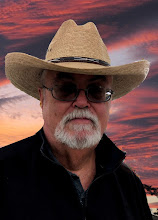“Woe to the Vanquished” is the second novel featuring Dr. Thaddeus Clay Harker, traveling medicine showman and top-notch criminologist and detective, and his assistants, former wrestler Hercules Jones and the beautiful Brenda Sloan. It was published in the June 1940 issue of RED STAR DETECTIVE with a great cover by Emmett Watson. RED STAR DETECTIVE is the retitled pulp that ran for one issue as DETECTIVE DIME NOVELS, where the first Doc Harker novel, “Crime Nest”, appeared. As this story begins Doc, Hercules, and Brenda aren’t involved in a case, they’re just on their way to the next stop where they’ll set up and sell the world-famous Chickasha Remedies that are Doc Harker’s stock-in-trade.
But then they run into a meeting of the Valiants of the Flaming Circle, a black-robed Ku Klux Klan sort of organization that firebombs and destroys a school run by a man they consider a Bolshevik. Doc and Hercules wind up being arrested and changed with murder. Crime and chaos ensue. Doc has his hands full sorting everything out and uncovering the truth about what’s really going on. Obviously, not everything turns out the way it appears at first.
The Doc Harker novels were written by prolific pulpster Edwin Truett Long under the transparent pseudonym Edwin Truett. Long was born in Missouri but spent most of his life in Texas, and according to Tom Johnson, who wrote the introduction to the Altus Press volume that collects all three of the novels, “Woe to the Vanquished” takes place in and around a thinly disguised Wichita Falls, Texas. That by itself is enough to make it of interest to me.
I’ve become an Edwin Truett Long fan. He was not the most rigorous plotter in the world, but his stories are fast-moving, full of action, blessed with colorful, interesting characters, and have occasional touches of humor. He was just a good yarn-spinner, and it’s a shame that his service in World War II as a cryptographer in Burma left him with medical issues that took his life in 1945 when he was only 44 years old.
DR. THADDEUS C. HARKER: THE COMPLETE TALES is available on Amazon in e-book and paperback editions. I’ve read two of the three novels now and really enjoyed both of them, so I don’t hesitate to give this collection a high recommendation if you like off-beat, fast-paced pulp adventure and detective stories.












